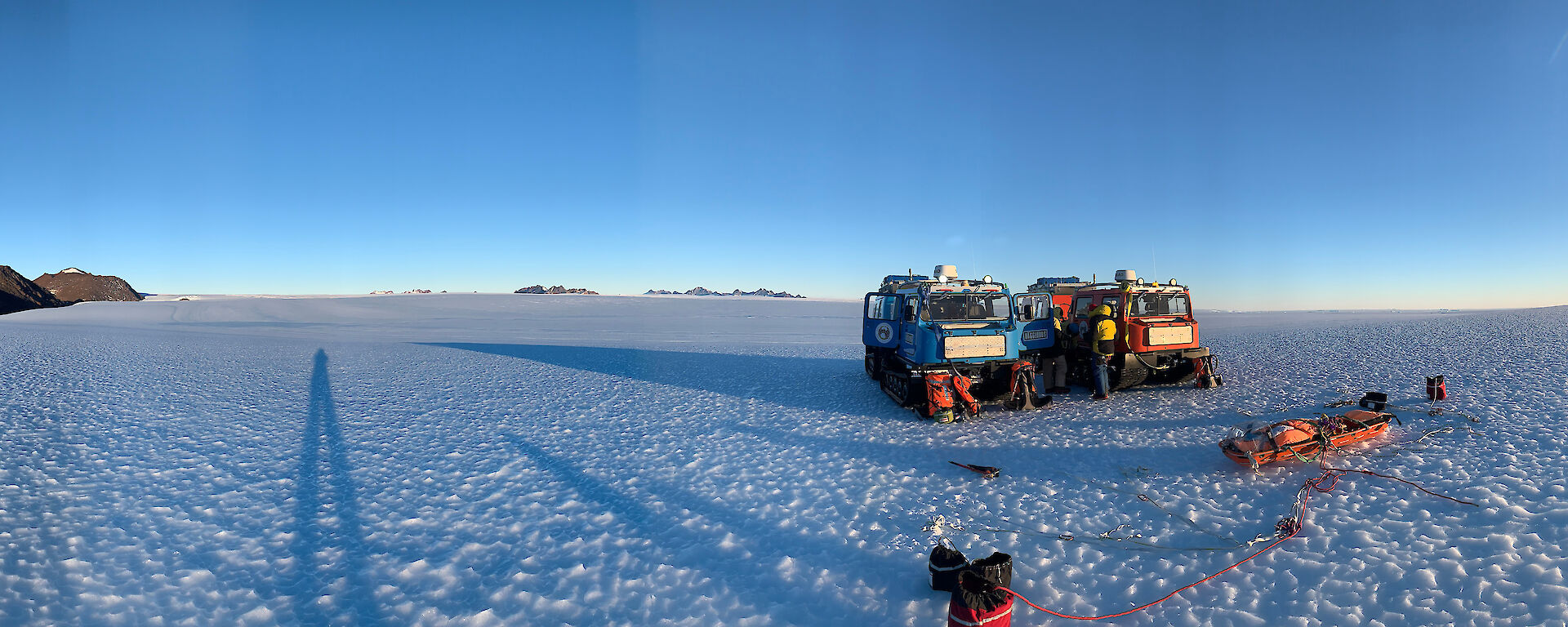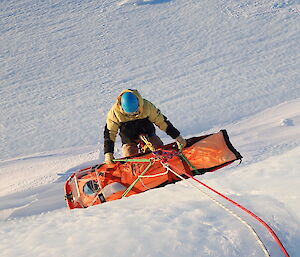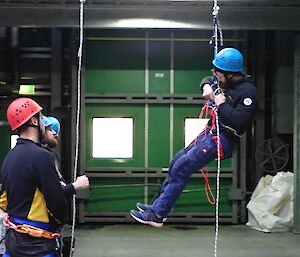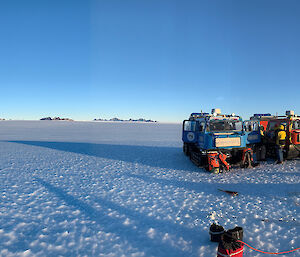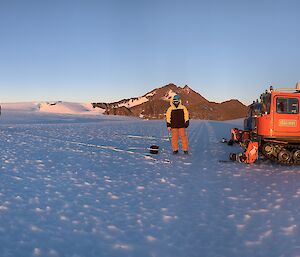In the three and a half months since we arrived here at Mawson, we’ve gone from the blue skies, long days and sunshine of summer to diminishing daylight and winter blizzards on a regular basis! The few clear sky days squeezed in-between have been spectacular and we've also been fortunate enough to catch many auroras during the evenings.
Our short spells of good weather have made it challenging at times for the Field Training Officer to deliver all of the field training. The glacier coming down to Mawson station allows us to get Field Travel Training done before the sea ice is formed, with Survival and Field Travel Training often combined.
Nights out bivvying for training were testing as temperatures dropped, but everyone coped well and looked after themselves in the cold (there might’ve been the odd grumble about rattling chip packets, ice on the face and cold toes, but I couldn’t say from where!).
In the past two weeks, the Search and Rescue team (SAR) have been out training and while we have had reasonable visibility, temperatures were often around minus 20°C with winds between 35–40 kts. This gave us all a good chance to get into ‘winter mode’ and we’ve had to completely cover up our faces to prevent frost-nipped cheeks and noses.
Working with ropes and tying knots means everyone needs reasonable dexterity with their hands, so multiple layers of gloves or mitts have meant we can take off outer gloves briefly to tie knots then hands can go back into outer gloves or mitts to stay warm.
The SAR group have also been practicing moving up and down ropes on prussic knots, raising and lowering the stretcher for rescues and roping themselves together for safe travel in glaciated terrain. Everyone hopes those skills won’t be needed, but it’s good to be able to have them if necessary.
Our sea ice formed last month in a spell of lower winds, but then recently dissolved back to open sea water following several gale-force blizzards. We’re hoping to get enough of a break in the wind that it can settle into place again before too long. Our next round of training will relate to travel on the sea ice once it’s thick enough to travel on.
Ian W (Senior Field Training Officer)

